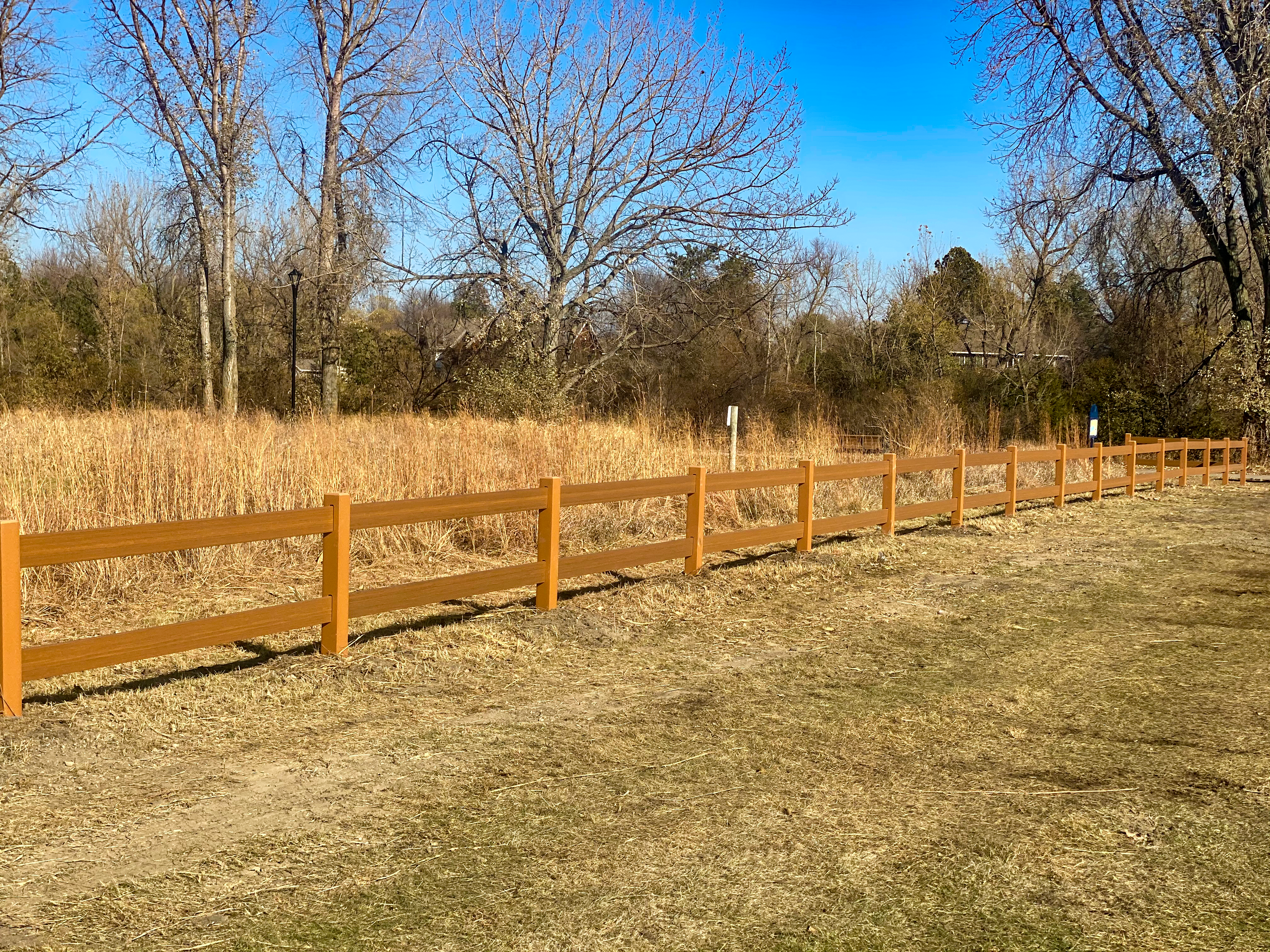5 Common Types of Fencing

There are many exciting building styles and material trends that have emerged in the fencing industry in recent years. Selecting the right material can be stressful, and there is a lot to consider when starting a fence project. Taking into account sustainability, installation, maintenance, aesthetics, and functionality, we highlight five popular types of fencing.
Iron
Iron fencing is commonly used to create a unique, personalized fencing solution. This heavy-duty material allows for a high level of customization since it is very malleable. However, wrought iron also requires significant maintenance when used for fencing. This material needs regular cleaning, repainting every two to three years, and is subject to rusting and corroding. The installation process for iron fences is relatively straightforward, but requires more time and is more labor-intensive than other materials, given the heaviness of the material. While these fences are strong and durable, they often require custom manufacturing and are more expensive than other common materials. Wrought iron fencing raises a big price tag for a fancy design.
Wood
Due to the variety of affordable styles available and the natural look it offers, wood fencing is often seen in residential, farming and agriculture fencing applications. While the initial installation process is relatively simple, wood fencing requires significant maintenance and will need to be sanded, primed, and re-stained every two to three years in order to retain its look. Wood is also subject to rotting and damage from insects. In outdoor applications, wood can be exposed to moisture for periods of time, resulting in rotting, splitting or cracking. When coming in contact with animals or vehicles, like in agricultural settings, wood fencing can be damaged more significantly than other materials.
Aluminum
Aluminum fencing is commonly used in commercial applications for its long-term functionality. This material requires little maintenance and is easy to clean. However, the upfront cost for an aluminum fence is higher than most materials. While aluminum is relatively low-maintenance and easy to install, it does not provide strength and security like other fence types. This material is very lightweight, making it easily bendable from contact or even a strong wind. There is also an overwhelming amount of aluminum fence manufacturers on the market right now, and there are a lot of ways to cut corners when constructing an aluminum fence, like cheaper material or poor coating. This makes it very difficult to find a solution you can trust1.
Chain-Link
Chain-link fencing is most often used at industrial and construction sites for its affordability and low-maintenance nature. Quick and easy to install, these fences are convenient for a few types of applications. For example, when needing to define a boundary between two places, a chain link fence can be put with ease. However, chain-link fences provide little privacy, as they are thin and see-through. Given its attractive price tag, you get what you pay for with a chain-link fence.
Recycled HDPE Plastic Lumber
Recycled HDPE lumber is a long-lasting, durable, and environmentally-friendly fencing solution that can be utilized in many different kinds of commercial and agricultural applications. Plastic lumber is an incredibly strong material that does not require the maintenance of other materials like staining, painting, or sanding. Plastic lumber fencing will not rot or splinter from harsh weather conditions and is impervious to insects. The installation process is simple, similar to a traditional building material like wood. Available in a wide variety of colors and with the option to add wood grain embossment, this material will keep your fencing system strong and intact for generations to come.
Choose plastic lumber for your next fencing project!
References












